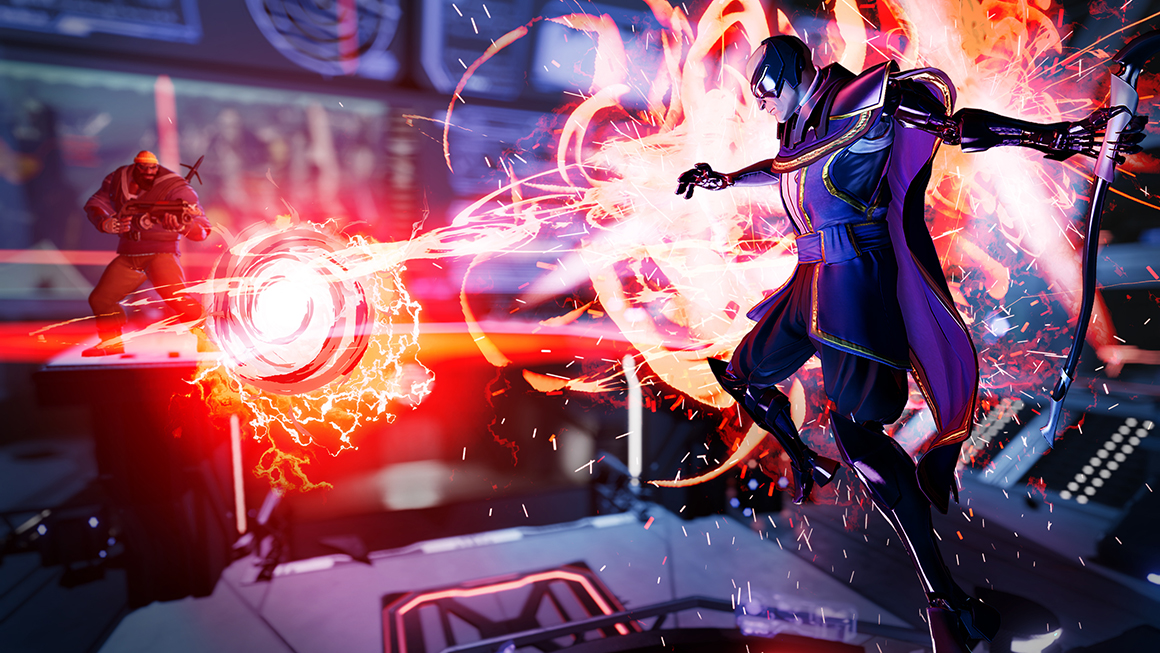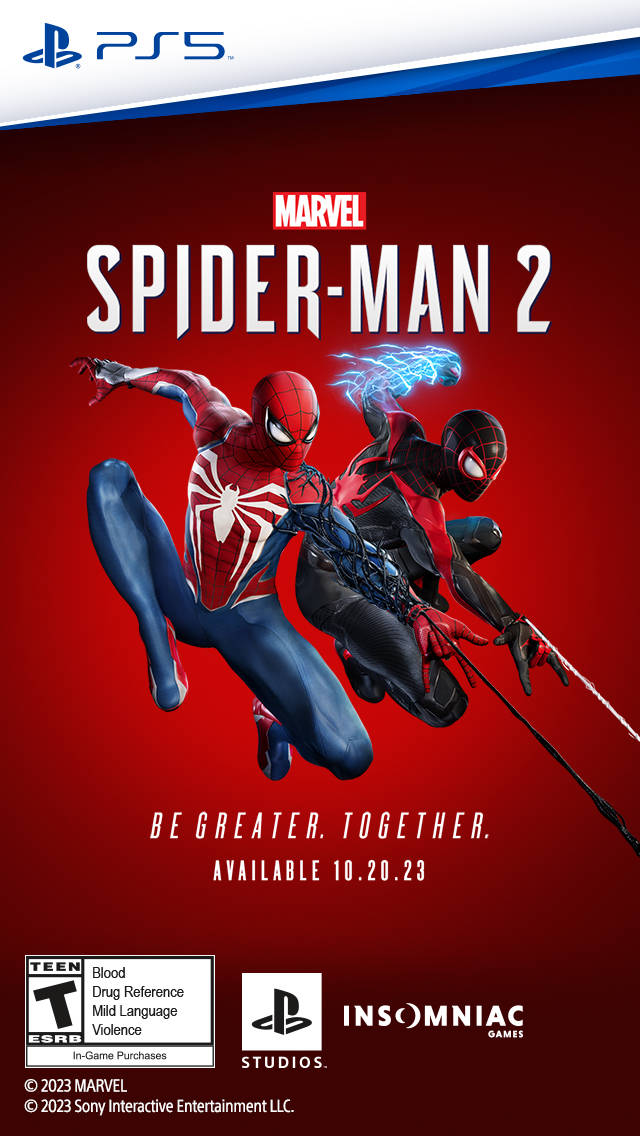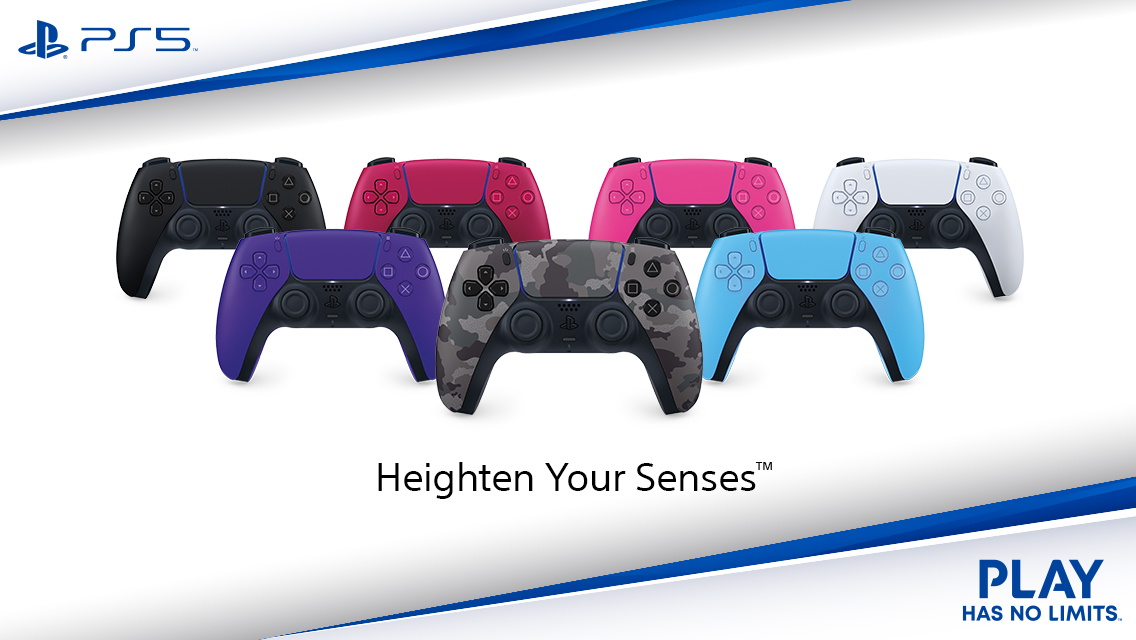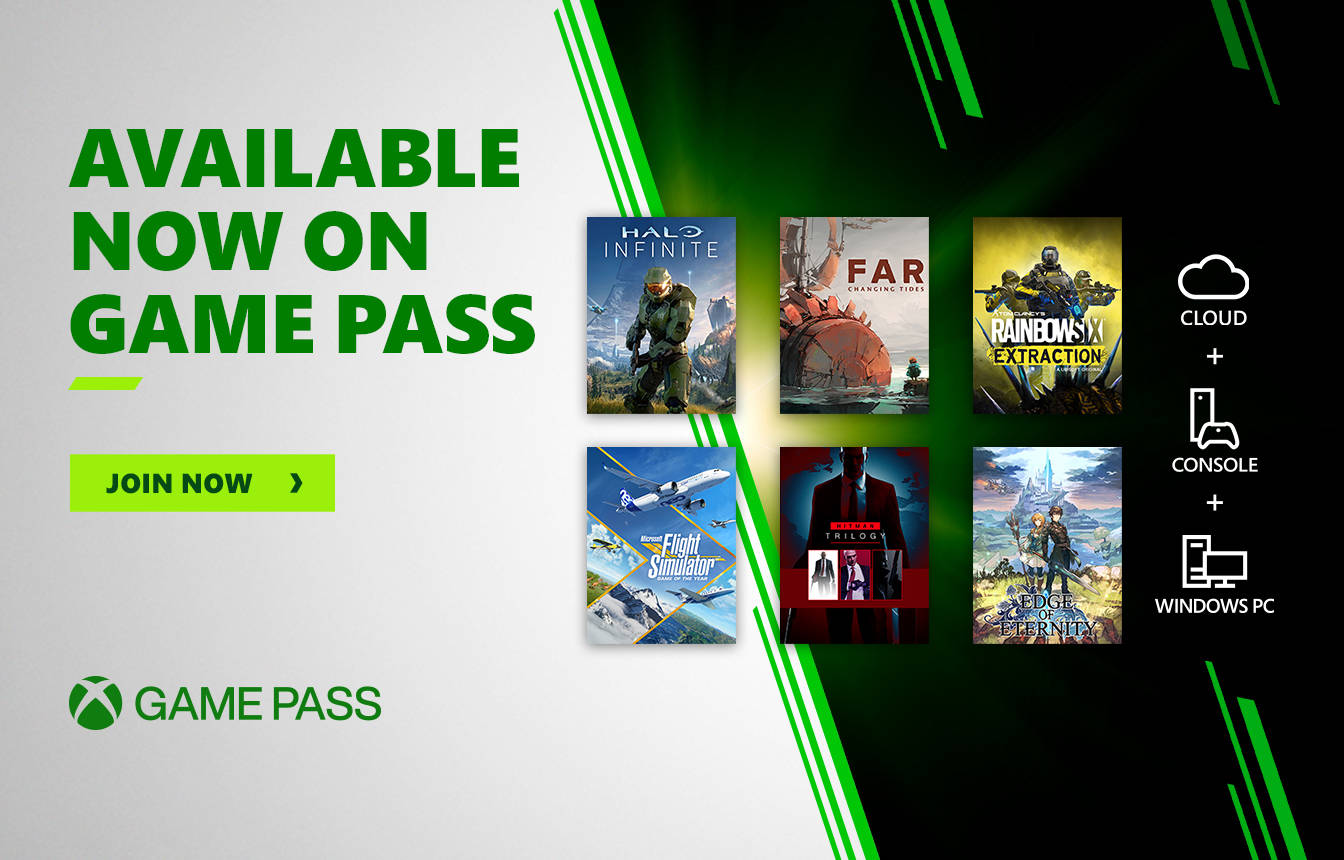
Agents of Mayhem review
Agents of Mayhem is an open-world, third-person, party-based, hero-based, RPG shooter, with light platforming elements and the overall mindset of a Saturday morning cartoon thrown in there for good measure. In other words, it’s trying to be everything. It’s almost as if developer Volition made a long list of currently popular gameplay mechanics and hoped mashing them together would, with their powers combined, see a great game emerge. However, in trying to do all the things, Agents of Mayhem ends up like an all-you-can-eat buffet: it has everything you want, but some of those things are way better than others.
While Agents of Mayhem is technically a spin-off of Volition’s previous series, Saints Row, the world and almost all of its characters have been retconned. Instead, Agents of Mayhem follows the events of Devil’s Night, when an evil force named LEGION emerged from the shadows and crippled the world’s governments, wresting control and establishing something of a terroristic police state. That’s where MAYHEM comes in. Having recruited twelve agents, former LEGION minister Persephone Brimstone (who appears in the end of Saint’s Row IV: Gat Out of Hell) founded MAYHEM to take down Dr. Babylon and bring LEGION’s grip on Seoul to an end.
If you’re reading that and having flashbacks of G.I. Joe versus Cobra, that’s pretty much exactly what they’re going for. In fact, the story is delivered in animated cutscenes whose style is reminiscent of older Saturday morning cartoons with a more modern sensibility. To accompany the cartoonish storyline, Agents of Mayhem’s diverse cast of characters each have a unique (if not slightly stereotypical) gimmick that relies on their cultural background: Oni, for example, is a former Japanese Yakuza who wears a demon face mask and excels at stealth and precision, while Rama is an Indian archer who performs a yoga pose before jumping into a car.
One of the highlights of Agents of Mayhem is how well designed each of the twelve agents you’ll play as are, at least on a visual level. Each agent has his or her own personality, which are thoroughly communicated by their individual styles and their only slightly cartoonish proportions. You know immediately who Yeti is when you see his hulking frame and his icy skin. The same goes for Daisy, a heavily tattooed rockabilly derby girl toting a heavy machine gun.
In addition to their unique visual designs, each of the twelve agents that you’ll play as have their own unique weapons, abilities, strengths, and weaknesses. Each time you go out into the open-world map of Seoul and embark on a mission, you’ll take a team of three agents with you. You only play as one agent at a time, but you can flip between agents on the fly. The trick is to create teams that play off each other’s strengths and weaknesses.
Agents are split up into three different categories based on their strengths: tanks, DPS, and specials. For example, Joule is great for clearing swarms of enemies with her turret, but she relies on her special quite a bit, is fairly weak on her own, and can easily be taken out by long-range enemies like snipers. In that case, you’d want to switch to a more mobile agent like Fortune, who can dash in mid-air to avoid those sniper’s shots and finish the enemy off by getting in close and overwhelming them with her dual pistols. But if Fortune starts getting overwhelmed by larger groups of enemies, bring in Hardtack who can tank a bunch of hits while getting in close with his powerful shotgun.
Mixing and matching the different combinations of agents is truly a rewarding feeling, especially when you’re intelligently using your agents in tandem to take down enemies on the higher difficulty levels. Combining Oni’s ability to debuff enemies with Daisy’s ability to quickly take down debuffed enemies is completely satisfying. The more you level up your characters, the more abilities and variations on special moves you unlock, and the more freedom you have in putting together your favorite team.
That being said, by the second half of the game, after I’d unlocked all the characters and gotten them to a certain level, I’d created a trio that perfectly fit my play-style and ended up ignoring the rest of the characters, at least for the main missions. Falling into the trap of comfort, I ended up entirely ignoring a large part of the roster so that I could get through the more difficult missions. Maybe that’s on me, but I did get the sense that some agents were just objectively better than others. Sometimes I’d only switch to my third character so that I could heal up the other two, since I was using them almost exclusively by the end of the game, using my third character as something like a mobile healing station. And that’s a shame, because each one of these characters is fun to use in their own right, but some were just way more useful than others.
The characters are fun to use in large part because the core combat is actually really satisfying, if not a little repetitive. Each mission will task you with completing one of three tasks: destroy a bunch of these things, hack that thing, or kill all those things. Some missions will throw in elements of the game’s serviceable driving mechanics just to mix it up, and some of the main story missions will get inventive with their settings and how they mix in elements of platforming, but mostly you’ll be traveling to a destination, pressing a button, and then fighting off wave after wave of enemies.
Thankfully, even though the mission design isn’t totally inspired, the combat is fast-paced, frantic, and truly fun. Agents of Mayhem is somewhat forgiving in its aiming mechanics: as long as you’re within your character’s specific range and the reticle is pretty much over the enemy, your shots will hit. But that’s fine with me, since Agents of Mayhem isn’t a twitch shooter; it’s an RPG shooter, where the challenge comes in switching between characters on the fly and utilizing their abilities, specials, and perks in tandem and letting loose a constant stream of bullets and strafing, dodging, and triple-jumping your butt off.
But as soon as you start to get away from the core combat mechanics and character combinations, Agents of Mayhem’s flaws begin to show. For one thing, while the characters are all fun to look at and play as, the actual writing that’s supposed to bring them to life is much less lively. While Agents of Mayhem tries to echo the feeling of watching a Saturday morning cartoon like G.I. Joe, complete with “episodes” (i.e. missions) that focus on and eventually lead you to one of the game’s five bosses, the actual agents themselves are barely part of the main storyline at all, instead focusing mostly on the villains of LEGION and the NPCs of MAYHEM. Only during the side missions do the agents themselves even interact, and that’s only accomplished with voice-over and dialogue while you’re playing.
The cutscenes that drive the story are also somewhat half-baked. I loved that Volition went with 2-D animation as a way to tell the story. Like the designs of the characters, the visual style of the animated cutscenes is fun to look at and fits the world of MAYHEM well. It really brought me back to not only the cartoons I enjoyed as a kid but also older games like Twisted Metal 2, which used evocative 2-D artwork to build its world. These cutscenes not only drive the main story forward, but each agent also gets an animated introduction that brings their personalities to life.
Unfortunately, these solo cutscenes are the only times that the agents themselves are featured and animated. There are never any animated cutscenes where two or more of the agents are put in a scene together, and it ends up making the actual agents of MAYHEM feel less like a total unit and more like hired help for Persephone and the other NPC characters, who get almost all of the narrative screen time. On top of that, while some of the cutscenes are fully animated, most of them are motion comics, and this sort of inconsistency became really distracting, not only because it looked strikingly unfinished, but because the static images brought the cliched and uninspired dialogue to the forefront.
Another part of Agents of Mayhem that felt half-baked is the world itself. Seoul is fun to look at, with futuristic yet still recognizably modern architecture, but it’s not quite as fun to play in. The world feels oddly lifeless and sterile, serving more as a canvas for explosions you’re causing and less as an engaging setting in its own right. While that may have worked in a game like Crackdown, the agents in Agents of Mayhem are without the agents of Crackdown’s mobility. I would be a lot less critical of Seoul itself if I wasn’t spending half my time at street-level in a car and instead was able to leap everywhere I wanted to go. It seems like an odd choice for Volition, to go from the insane superpowers of Saint’s Row IV back to the more subdued, car-reliant locomotion of the earlier games. Sure, you can triple-jump, and that makes for some fun platforming moments, but why can’t one of the characters run all the way up the side of a building while another one can leap from roof to roof?
Fortunately, you only spend about half your time in the game’s overworld. Unfortunately, you spend the other half combing through the same dungeon-like LEGION lairs over and over again. Many of the game’s side-quests (and even some of the main missions) will task you with finding an entrance to LEGION’s underground lair and then making your way through it while hacking, killing, and exploding everything around you. While that might sound like fun, the lair itself never changes, and you’ll repeatedly visit the same rooms and the same hallways, accomplishing the same tasks over and over again. It’s such a strange design choice, because it becomes mind-numbingly repetitive and completely ignores the city that I’m sure Volition spent a decent amount of time and money developing (or maybe not, as the world map itself is actually quite small compared to many other open-world games). The game had me visiting the lair so often that when I look back at this game, I can only remember a few specifics about Seoul itself, while I can recall pretty much everything about the monotonous, dark, slightly sci-fi cubic hallways and chambers of LEGION’s lair, and it’s not something I want to remember.
The repeated use of the lair as a setting wasn’t the only thing that made the game feel a little undercooked. Weird gaps in the expository dialogue at the beginning of each mission would occur while I was driving, leaving about a minute of silence between some lines of dialogue. Other weird visual quirks — like the tip of Braddock’s cigar “burning” the screen for a second while she was diving into a car — would consistently take me out of the experience. It’s not like these messy moments completely ruined my experience with the game or made it unplayable, but it definitely reeked of a game that was unfinished, or at least unpolished.
And that basically describes Agents of Mayhem in a nutshell: it doesn’t feel entirely finished. That’s not to say it isn’t fun to play, because it mostly is, and that’s what really matters. But there is so much potential in this game, and it’s overshadowed by some of the lazier choices, like the constant plumbing of the underground lairs or the fact that there’s just nothing to do outside the main campaign and handful of side-quests besides blowing up a bunch of stations that create ice storms or stealing one of three civilian cars in the game.
This is mainly to say that fans expecting Volition to expand on the absolute insanity of Saints Row IV will probably be disappointed. Agents of Mayhem is surprisingly subdued compared to its predecessor, which is even stranger considering one of the bad guys is a cyborg that’s marrying a hive-mind AI that manifests as a five-piece K-pop girl group. Still, Agents of Mayhem makes a pretty solid argument about why it should exist on its own terms, even if it feels more like an expansive demo for what will assuredly be a more solid, comprehensive sequel.
|
★★★☆☆
Agents of Mayhem is one of those games with so much potential that just doesn’t quite reach the heights it probably could. That being said, its exhilarating combat and unique character system have me looking forward to a more polished, more fully conceived sequel. |
Developer Volition, Inc. Publisher Deep Silver ESRB M - Mature Release Date 08.15.17 |
| Agents of Mayhem is available on Xbox One, PlayStation 4 and PC. Primary version played was for Xbox One. Product was provided by Deep Silver for the benefit of this coverage. EGM reviews on a scale of one to five stars. | |

Michael Goroff has written and edited for EGM since 2017. You can follow him on Twitter @gogogoroff.





